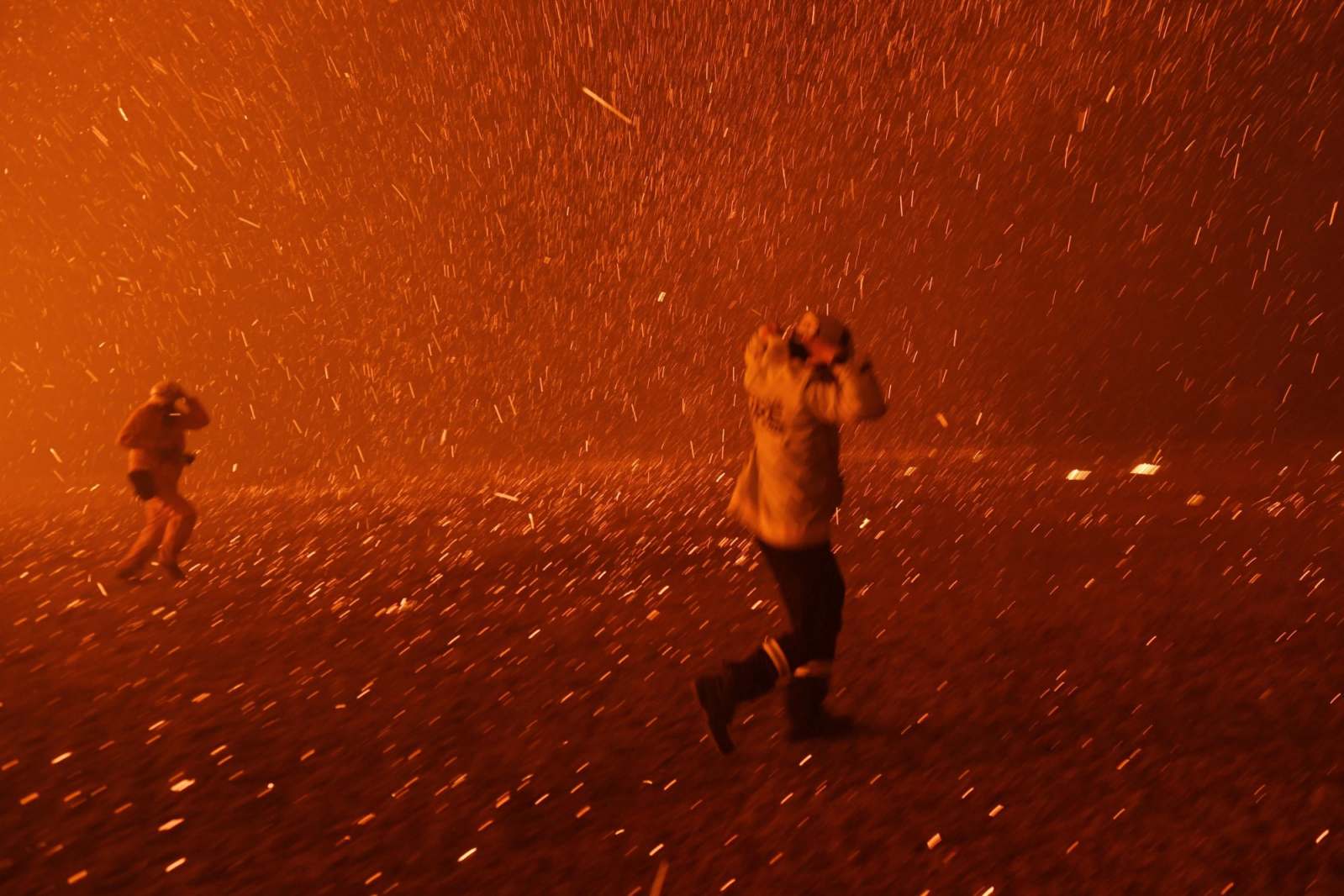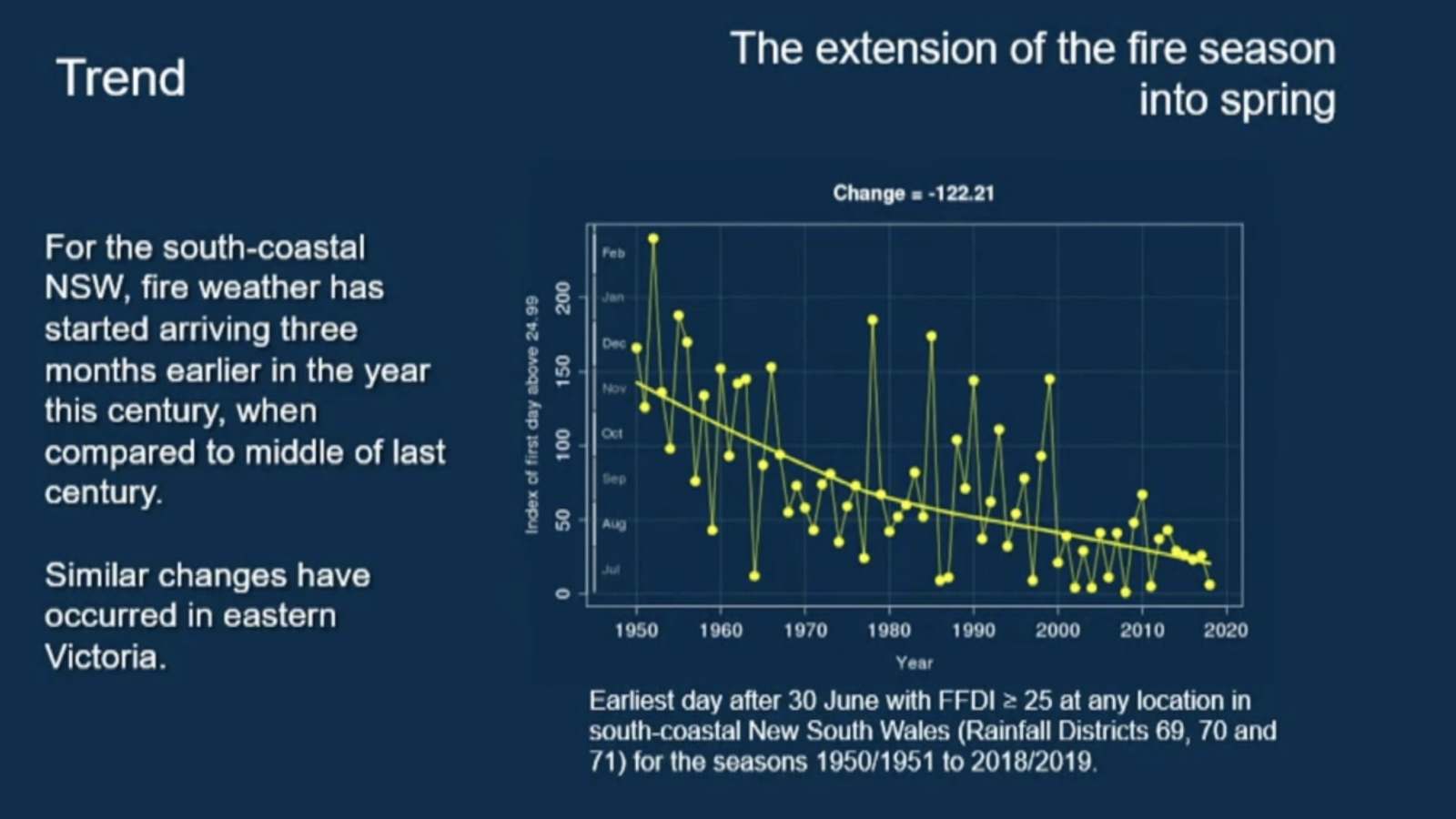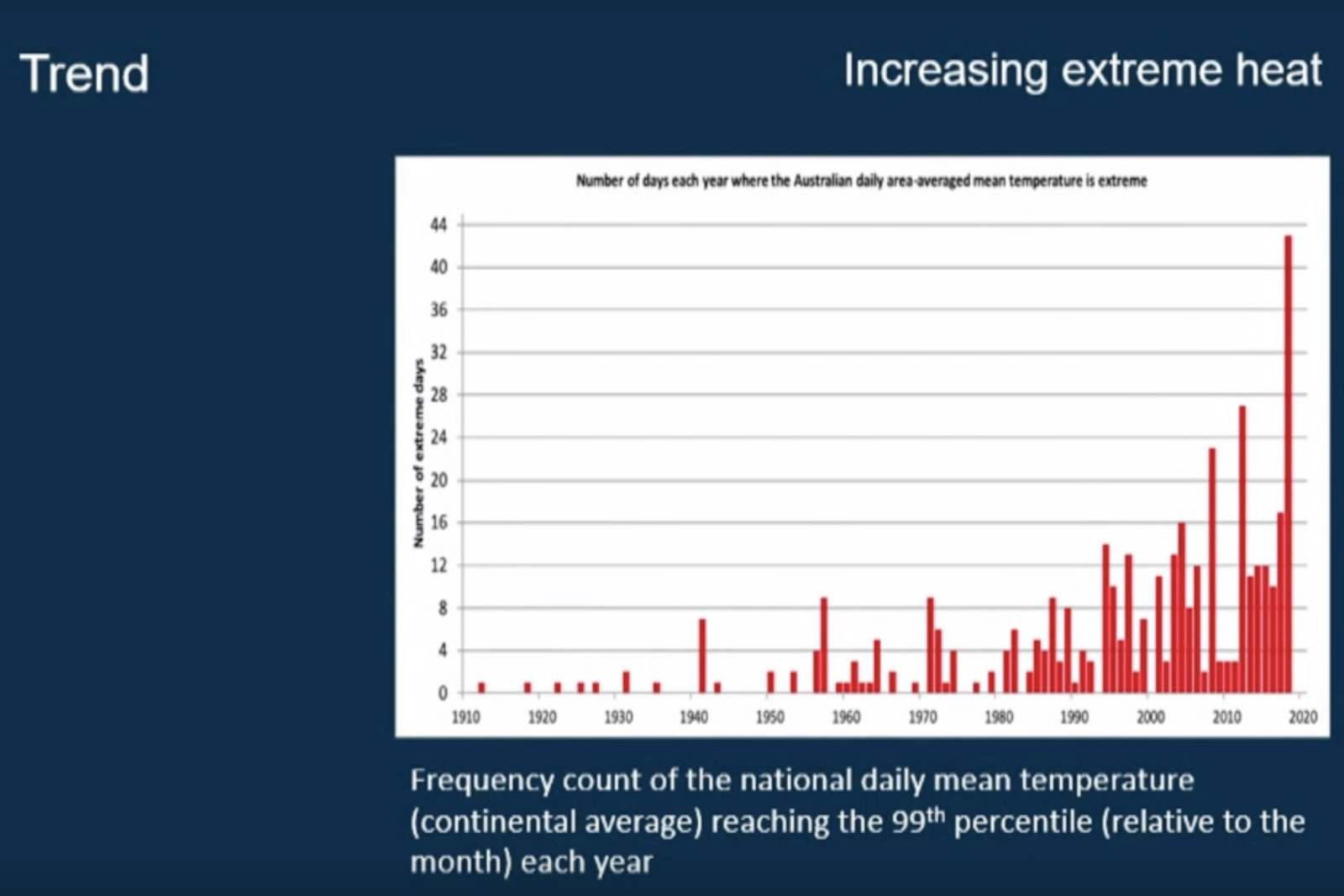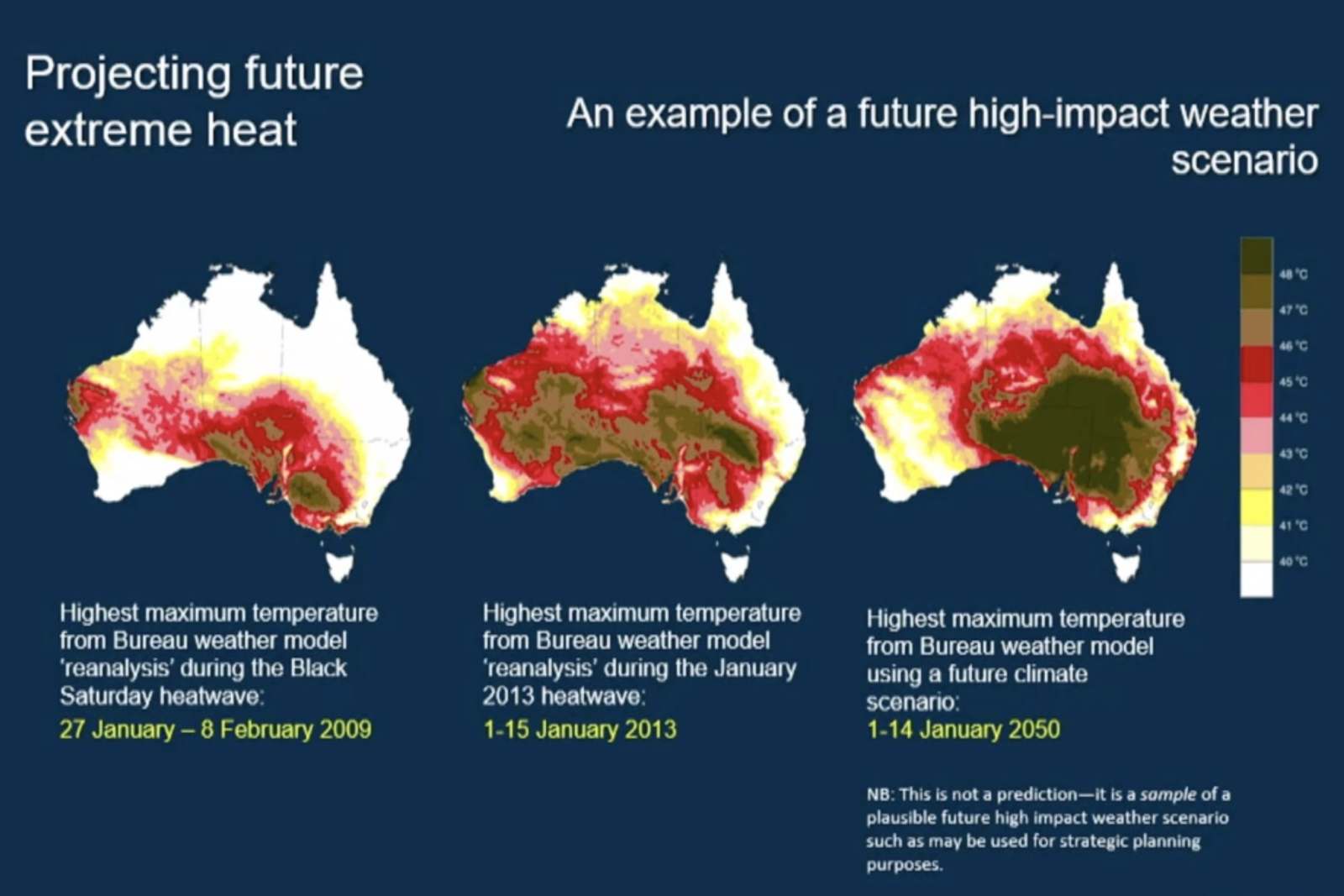Fire season extends by almost four months in parts of Australia
by Peter Hannam, Laura ChungThe fire season in parts of eastern Australia has lengthened almost four months since the 1950s, with climate change a prominent driver in the trend, the Bureau of Meteorology says.
Karl Braganza, head of the bureau's climate monitoring, told the first day of public hearings for the Royal Commission into National Natural Disaster Arrangements on Monday that the South Coast of NSW and eastern Victoria now see fire weather arriving three months earlier, occurring towards the end of winter rather than the end of spring.

At the end of the season, both areas were also reporting fire conditions - when the main index tracking risks tops 25 - extending about 21-30 days further into autumn, Dr Braganza said.
The longer season had implications for agencies trying to combat bushfires, with overlapping conditions stretching resources at home and abroad with similar climate trends appearing in other nations.
The royal commission is one of several inquiries under way, including the NSW government inquiry. Both are keen to wrap up before the new fire season begins, with the NSW report due by the end of July and the federal royal commission reporting a month later.
Dr Braganza's evidence emphasised how the background warming climate was "loading the dice" by exacerbating Australia's natural variability. For instance, the number of days of extreme heat across Australia with daily mean temperatures in the top 1 per cent had soared.

"Now we have these spike days that are more extreme," he told the royal commission.
While the past season's bushfires had been set up by conditions in the Indian Ocean and the Southern Ocean that favoured drier-than-average conditions, the longer-term warming trend and the drying out of southern Australia during the cooler April-October period also played a role, Dr Braganza said.
The first two decades of this century already stand out as warmer than any previous period, increasing the odds of extreme weather, including more severe bushfires.
"Really since the Canberra 2003 fires every jurisdiction in Australia has seen this really," Dr Braganza said. "[We] have seen some really significant fire events that have challenged what we do to respond to them, and have really challenged what we thought fire weather looked like preceding this period."

Using projections of current trends, the area of Australia experiencing extreme heat will likely grow.
For instance, much of Australia could endure extended periods above 48 degrees if conditions during the 2009 Black Saturday run-up were repeated and the expected climate warming added in, bureau modelling showed.
While the past summer was bad, conditions could have been worse, Dr Braganza said.

The Otway Ranges, to Melbourne's south-west, was as primed for fires as many of the areas that did burn, with only the source of ignition missing, he said.
The neutral conditions in the Pacific also moderated the possible extremes had there been an El Nino event, which often accompanies the type of conditions observed in the Indian and Southern oceans, Dr Braganza said.